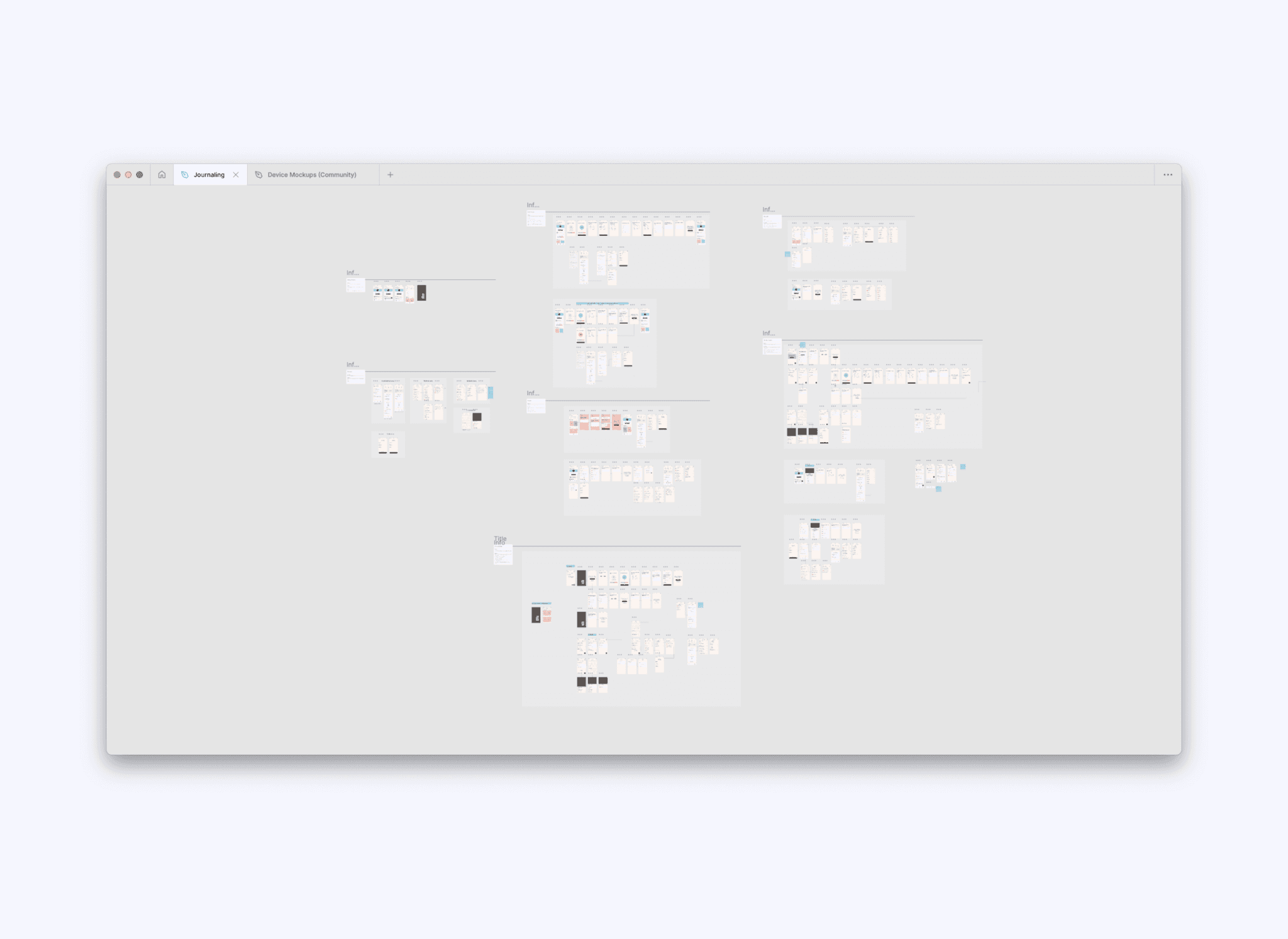








Foundations users needed a simple, intuitive tool for tracking their moods, creating journal entries, and reviewing them. Traditional methods of mood tracking can be hard to make a habit out of, time consuming and challenging to monitor a effectively. We saw this as an opportunity to increase user adoption to encourage users to use the journalling feature as a "gateway" to the app, and to increase user engagement by encouraging users to return daily between the use of programs and activities.
UI Designer
UX Research
Mobile App
I collaborated with user research and specialists to gather insights on journaling habits and mood tracking, and reviewed competitors' strategies and visuals to identify strengths and gaps.
This combined research guided the foundational design for the mood tracker, aligning user habits with evidence-based practices.

I used research insights to define requirements for wireframes and designs, incorporating feedback from designers and stakeholders.
I explored allowing users to easily log a mood, add quick journal entries, make these entries easily accessible and track the mood over time.

Directing a concept study gathered user reactions, early product direction signals, and feedback on visual design, which aided me in choosing a direction.
I explored user expectations for creating and retrieving inputs, revealing key preferences. We found that users wanted to add mood, have the option to add a written entry, expected to find results in the ‘my journey’ section.


Directing a concept study gathered user reactions, early product direction signals, and feedback on visual design, which aided me in choosing a direction. I explored user expectations for creating and retrieving inputs, revealing key preferences.
We found that users wanted to add mood, have the option to add a written entry, expected to find results in the ‘my journey’ section.



.webp)

After 30 days we found there was a 5% increase in user adoption, and a 9% increase in user engagement.
Our users were happy.A journaling feature may seem simple however it had it's challenges. As a concept it is quite ambiguous. Concept testing allowed me to re-focus the direction when I went a bit to far exploring ideas.
During this project I learned to combine user needs, scientific needs and business goals, and how to collaborate within a Design System and quickly align on key UI components.